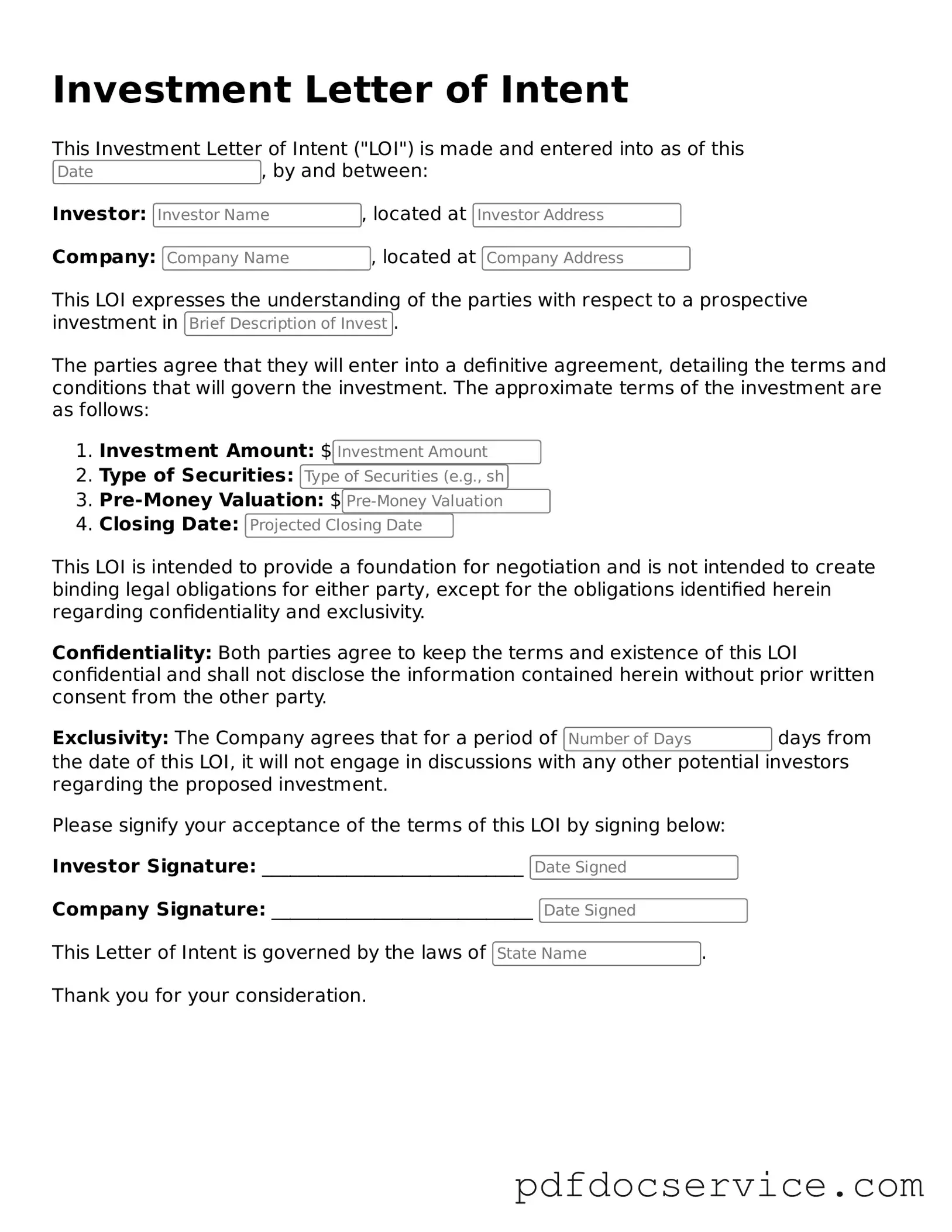What is an Investment Letter of Intent?
An Investment Letter of Intent (LOI) is a document that outlines the preliminary agreement between parties interested in making an investment. It serves as a roadmap for negotiations and details the key terms and conditions that the parties agree to discuss further. While it is not legally binding, it expresses the intent to proceed with the investment under certain conditions.
Why should I use an Investment Letter of Intent?
Using an LOI can help clarify the expectations and intentions of both parties before entering into a formal agreement. It can:
-
Establish a framework for negotiations.
-
Identify key terms such as investment amount, timelines, and conditions.
-
Demonstrate commitment to the investment opportunity.
Is an Investment Letter of Intent legally binding?
Generally, an LOI is not legally binding, meaning that it does not create enforceable obligations. However, certain sections, like confidentiality or exclusivity clauses, may be binding. It’s important to clearly state which parts are binding and which are not to avoid misunderstandings.
What key elements should be included in an Investment Letter of Intent?
While the specific content can vary, a typical LOI should include:
-
The names and contact information of the parties involved.
-
A description of the investment opportunity.
-
The proposed investment amount and structure.
-
Key terms and conditions for the investment.
-
Timeline for due diligence and closing.
-
Confidentiality provisions.
How does an Investment Letter of Intent affect negotiations?
An LOI can streamline negotiations by ensuring that both parties are on the same page regarding the essential terms. It can help avoid misunderstandings and provide a foundation for further discussions. By clearly outlining expectations, it can also reduce the time needed to finalize a formal agreement.
Can I change the terms after the Investment Letter of Intent is signed?
Yes, the terms in an LOI can be changed. Since it is a preliminary document, both parties can negotiate adjustments before finalizing a formal agreement. Open communication is key; if changes are needed, discuss them promptly to ensure both parties remain aligned.
How long is an Investment Letter of Intent valid?
The validity of an LOI typically depends on the terms outlined within it. Most LOIs specify a timeframe for negotiations or due diligence, often ranging from 30 to 90 days. If no timeframe is mentioned, it’s wise to set one to maintain momentum in the negotiation process.
What happens after the Investment Letter of Intent is signed?
Once the LOI is signed, the next steps usually involve due diligence, where both parties investigate the investment opportunity further. This phase may include financial assessments, legal reviews, and discussions to finalize the terms. After due diligence is complete, a formal investment agreement can be drafted and signed.
Do I need a lawyer to draft an Investment Letter of Intent?
While it is possible to draft an LOI without legal assistance, consulting a lawyer is advisable. A legal professional can ensure that the document accurately reflects your intentions and protects your interests. They can also help clarify any binding clauses and ensure compliance with relevant laws.
